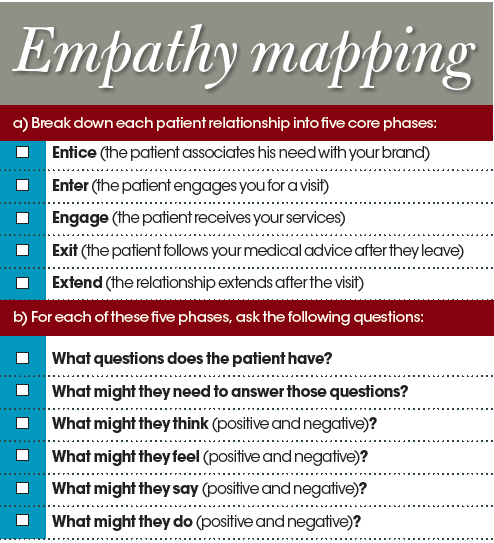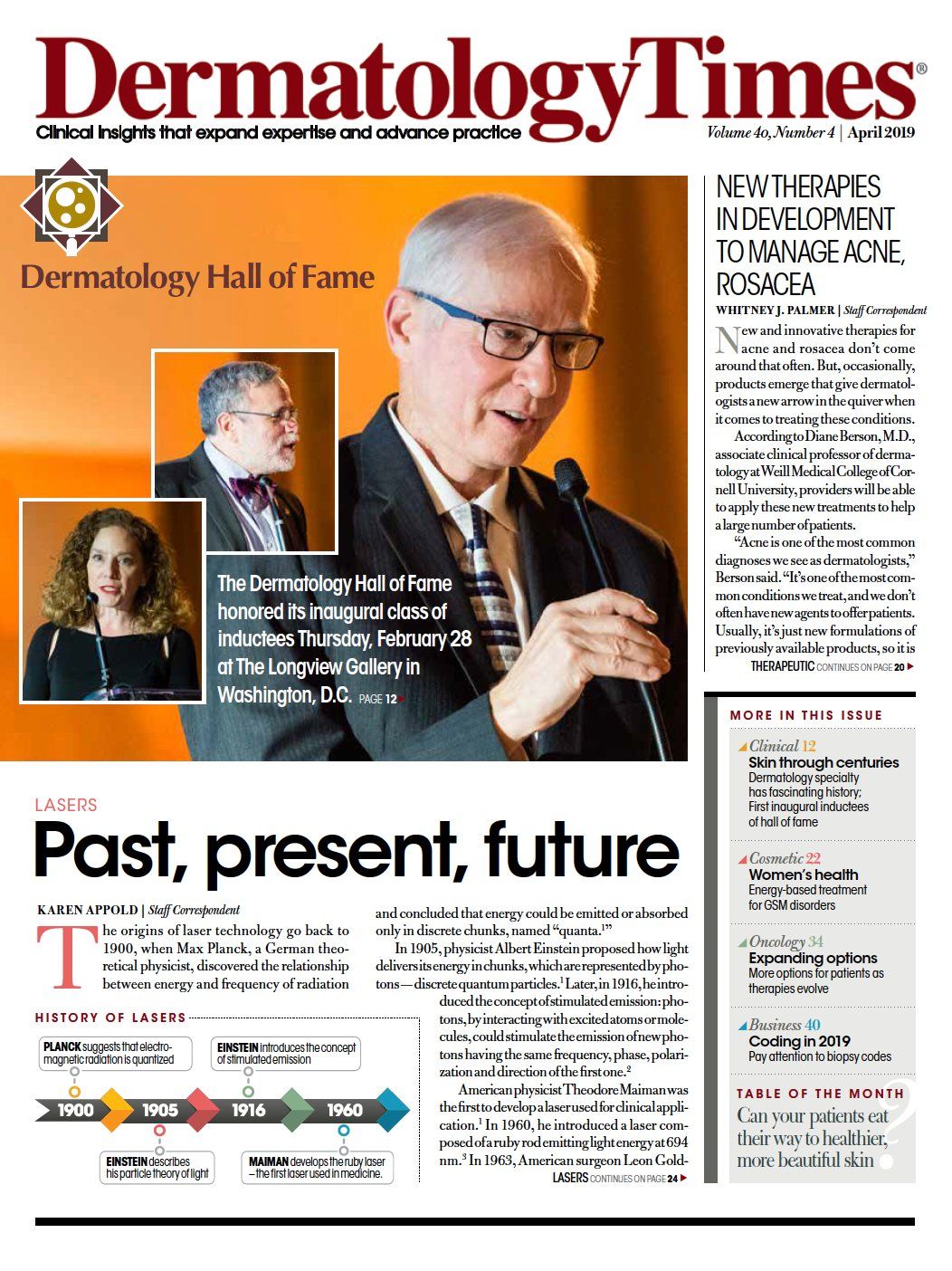- Case-Based Roundtable
- General Dermatology
- Eczema
- Chronic Hand Eczema
- Alopecia
- Aesthetics
- Vitiligo
- COVID-19
- Actinic Keratosis
- Precision Medicine and Biologics
- Rare Disease
- Wound Care
- Rosacea
- Psoriasis
- Psoriatic Arthritis
- Atopic Dermatitis
- Melasma
- NP and PA
- Skin Cancer
- Hidradenitis Suppurativa
- Drug Watch
- Pigmentary Disorders
- Acne
- Pediatric Dermatology
- Practice Management
- Prurigo Nodularis
- Buy-and-Bill
Publication
Article
Dermatology Times
How to attract loyal patients
Author(s):
Ryan Suydam, chief experience officer at Client Savvy, wants your patients to have an excellent experience. That’s why he’s sharing his top five tips to improve the patient experience, which will not only help you attract new patients – it will keep your current patients coming back to your practice.
“Firms that have implemented customer experience strategies are 300% more likely to realize substantial growth in revenue and profit," says Ryan Suydam, chief experience officer at Client Savvy.

Figure 1

When Ryan Suydam, chief experience officer at Client Savvy, wanted to make an appointment with a local dermatologist, he tried to book his appointment online. He found the practice he wanted to use didn’t offer this option, so he made an appointment with a competing practice. Without even visiting the initial practice, he’s already had a negative patient experience.
Mr. Suydam wants your patients to have an excellent experience. Out of the gate, he also wants to clearly differentiate between customer service and the customer, client or patient experience.
“The former is very much reactive,” Mr. Suydam says. “You have to be in the process of being served to have bad customer service. That doesn’t refer to the overall experience that truly high-value clients expect, and that causes them to walk into your practice once
and then return on a regular basis.”
KNOW YOUR ‘TOUCH POINTS’
Perfecting the client experience requires you to look comprehensively at your clients’ emotional state that occurs with every touch point with your brand, he says. “In medicine, that can involve a journey that begins when the patient starts thinking about you, then how long they wait, how their records are managed, and how their bills are processed. And of course, it includes their visit with the dermatologist and how they think about the interaction when it’s over.”
Client experience management is about understanding and managing all touch points, he says. “If you identify a weakness, then redesign that touch point so it’s not a frustration,” he says.
EFFECTIVE CUSTOMER EXPERIENCE IS A WINNER
Yes, this is all worth your time, Mr. Suydam says. “Firms that have implemented customer experience strategies are 300% more likely to realize substantial growth in revenue and profit. These firms are more likely to attract and retain both the best clients and the best employees. Employee engagement goes up. Emergencies that interrupt weekends and family vacations go down. Nearly everything in the business improves when everyone knows how to make the clients’ experience a priority.”
He shares his top five tips on how to focus on your patient experience.
1. INTRODUCE CLIENT EXPERIENCE THINKING.
At your staff meeting, introduce a CUSTOMER EXPERIENCE moment, an experience one patient faced in your practice that week, and describe how your staff rose to the occasion to make that patient happier. Recognize the staffer who made that moment happen - a success that was realized by the patient.
“Your team may find it hard at first to distinguish between a patient’s success and something cool your own practice did,” says Suydam. “Keep pushing, and begin emphasizing and creating a ‘culture of the client.’”
2. INSTITUTIONALIZE EMPATHY.
All clients have perceptions, sentiments, feelings, wants and needs that you don’t know about. You can gain insight about clients’ potential sentiments with internal reflection, and discover their actual sentiments by asking them directly. Anticipated sentiments are quickly catalogued and understood with a simple process called client empathy mapping. (See Figure 1)
Even though a patient visit may only last 15 minutes, it might take your team a few hours to build out a real map of the experience.
“Brainstorm actions you can take to address any negative outcomes and encourage any positive outcomes,” he says. “From there, you can prioritize and design the experience to craft the best one possible.”
3. TRANSFORM EMPATHY INTO LISTENING
Create purposeful or active listening to gain more patient insights, perhaps with client feedback. “With practice, employees become better listeners in meetings and on phone calls, and better observers of writing, while offering empathetic and more complete solutions to problems,” Suydam says.
“Every time something changes in what, when, where or how a patient chooses to do business with you, use that opportunity to learn something about the patient and about your practice,” he says.
4. EMPLOY STRATEGY, DESIGN AND GOVERNANCE.
“Now is time to define a specific strategy that describes the intended patient experience,” he says. “For each strategic goal in your business plan, define exactly how your patient experience supports the overall goal. Create a governance committee to establish the criteria for how patient input and your experience design ideas will be used at the practice. This group should also pursue root causes of failed patient experiences and recommend systemic fixes.”
5. UTILIZE ENCULTURATION.
“To fully enculturate or learn the culture of CUSTOMER EXPERIENCE, ‘experience thinking’ needs to be core to all decision-making processes and initiatives,” says Suydam. “You will make hires through the lens of CUSTOMER EXPERIENCE. You will set firm strategy and promote leaders with CUSTOMER EXPERIENCE in mind. Your team will, on their own initiative, identify experience opportunities. They’ll work in ways that demonstrate patient empathy in everything from marketing, messaging, and brand, through service delivery, accounting, finance, and IT - the use of your EMR or EHR - and will operate in ways that are sensitive to the client.”
Now you have tools to recalibrate the patient experience in your practice, to attract patients there and keep them coming back. Â







